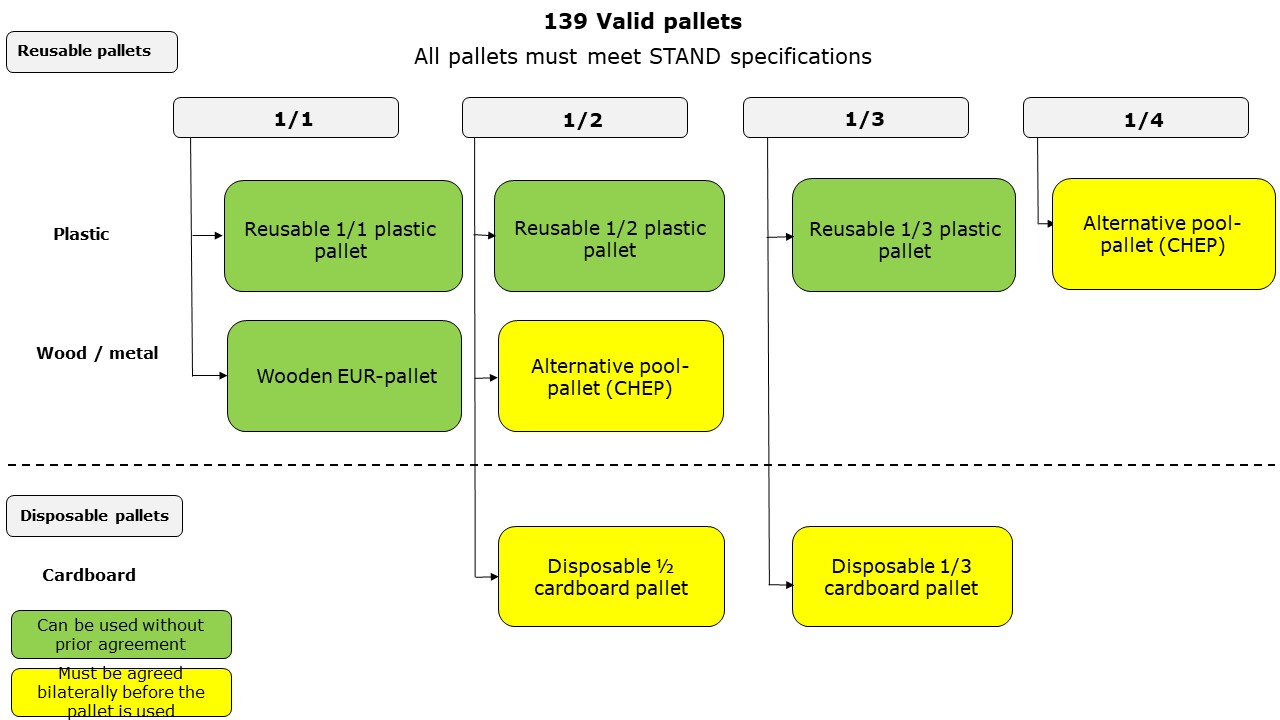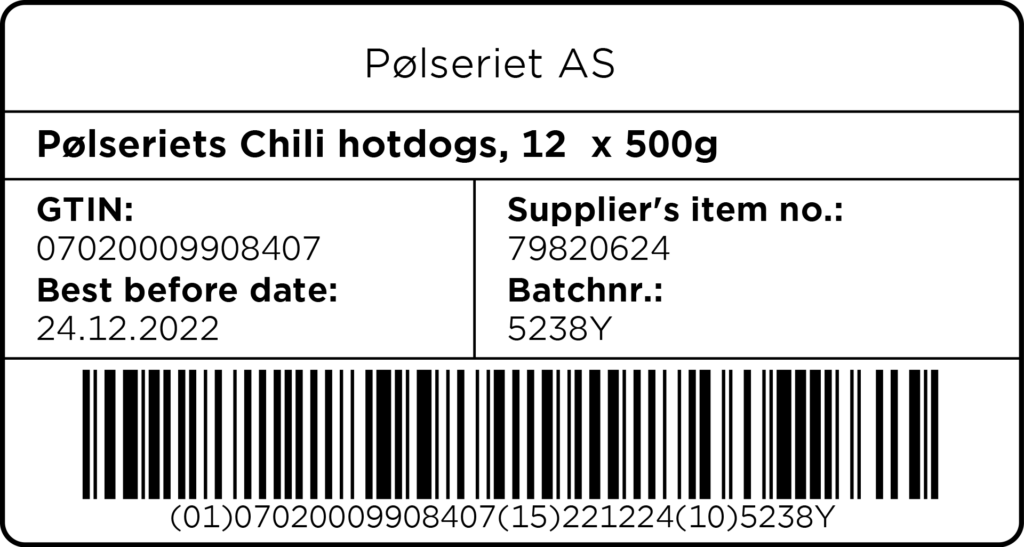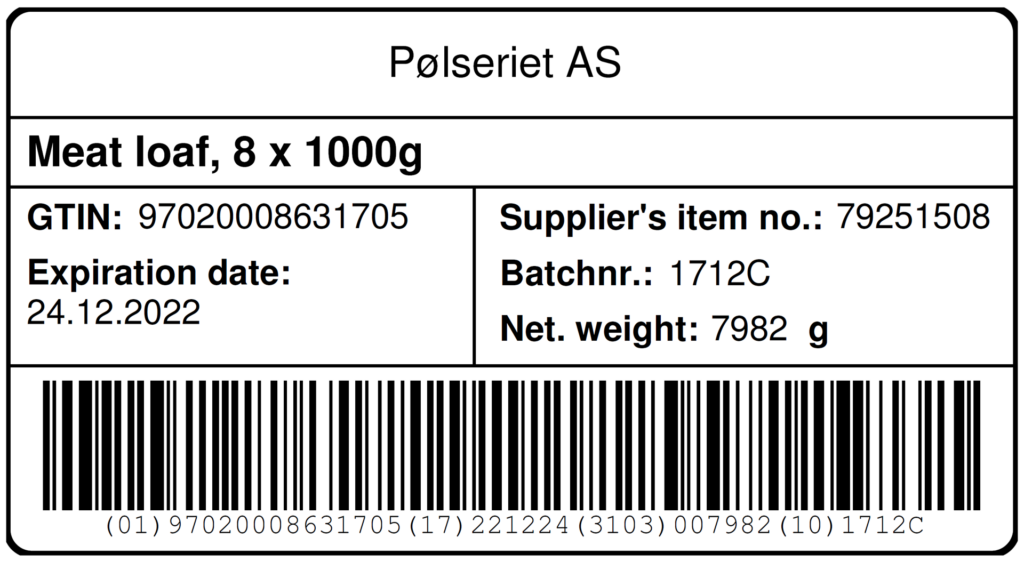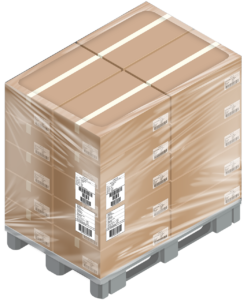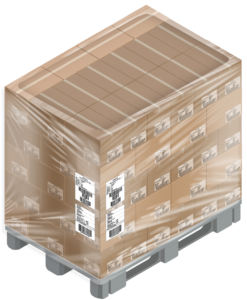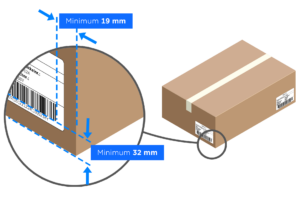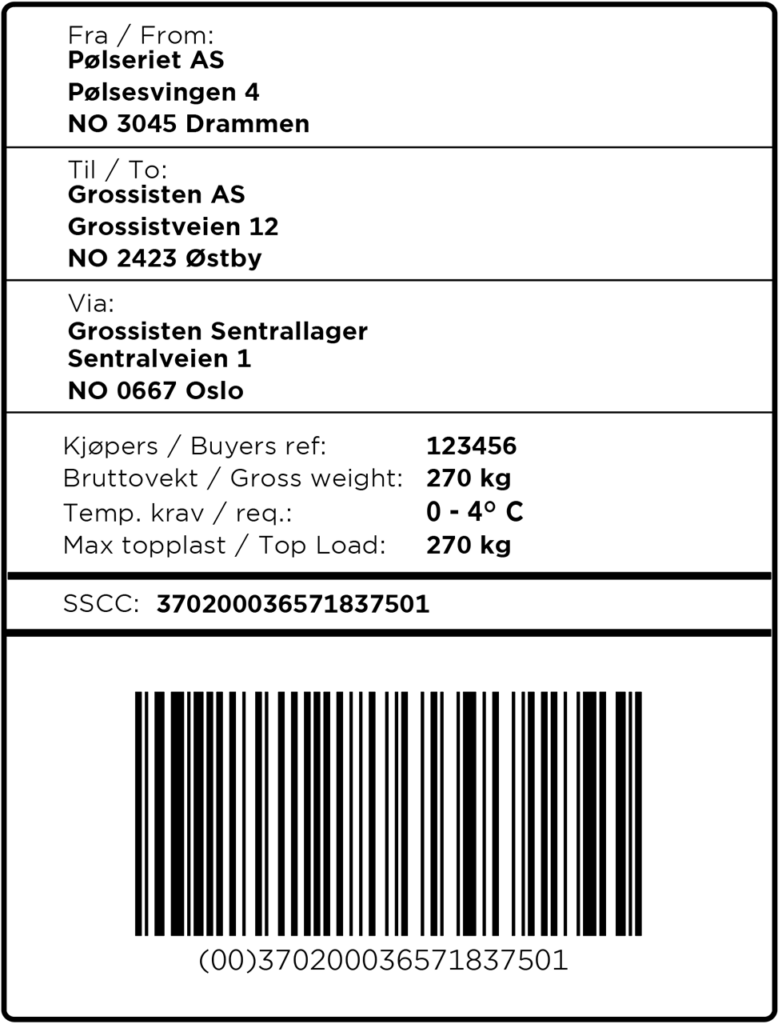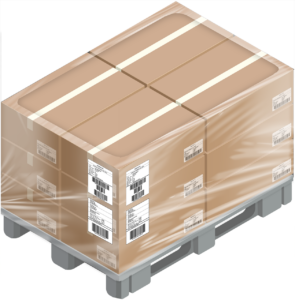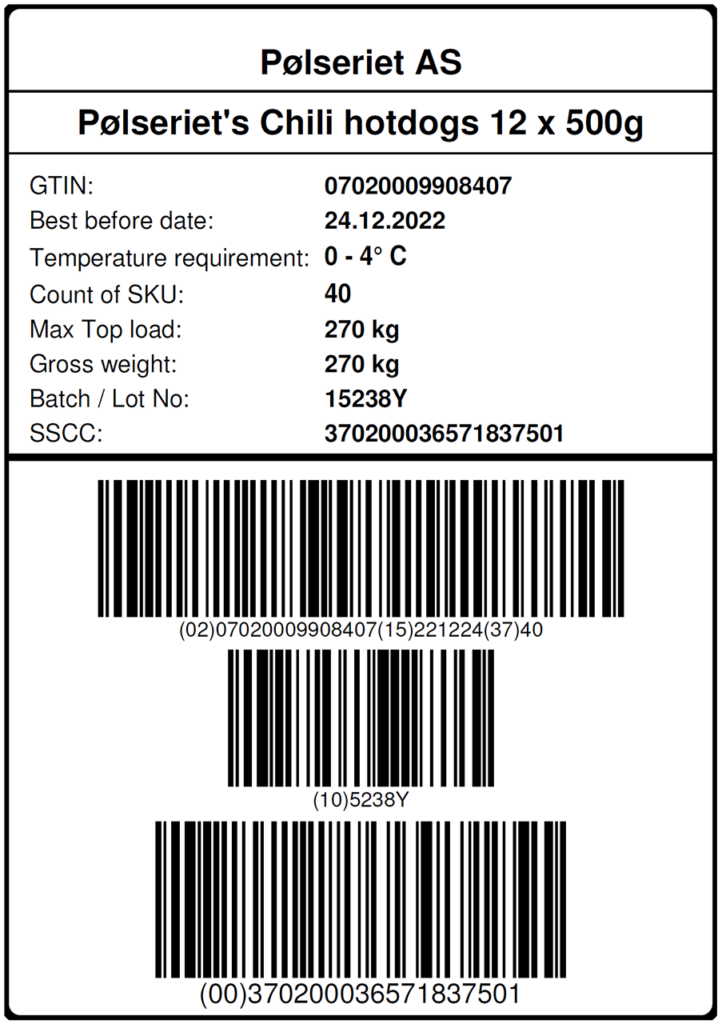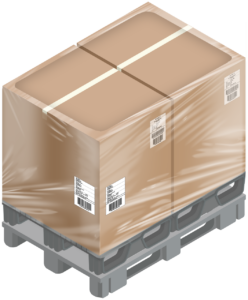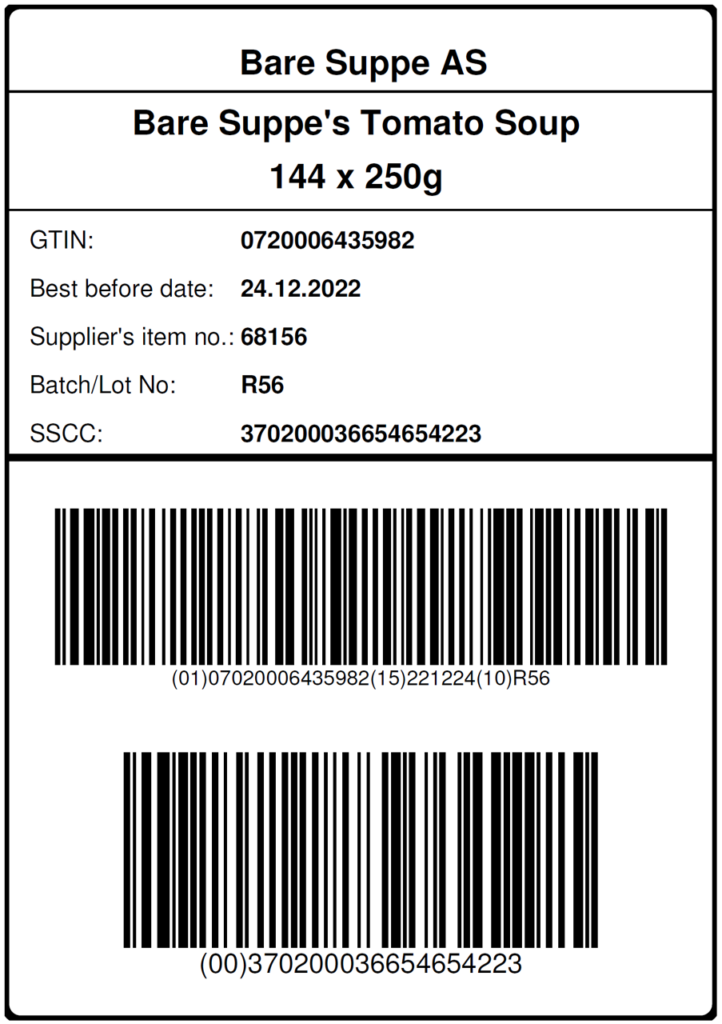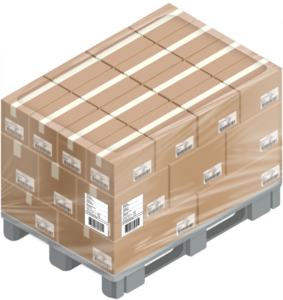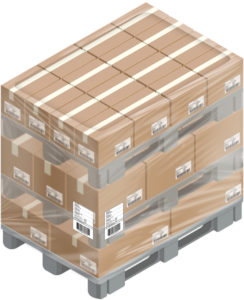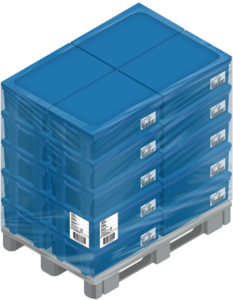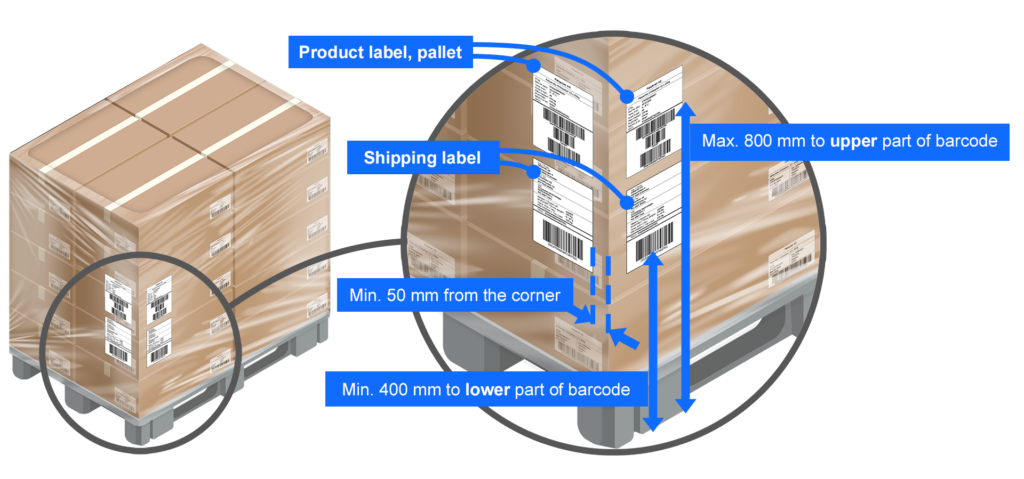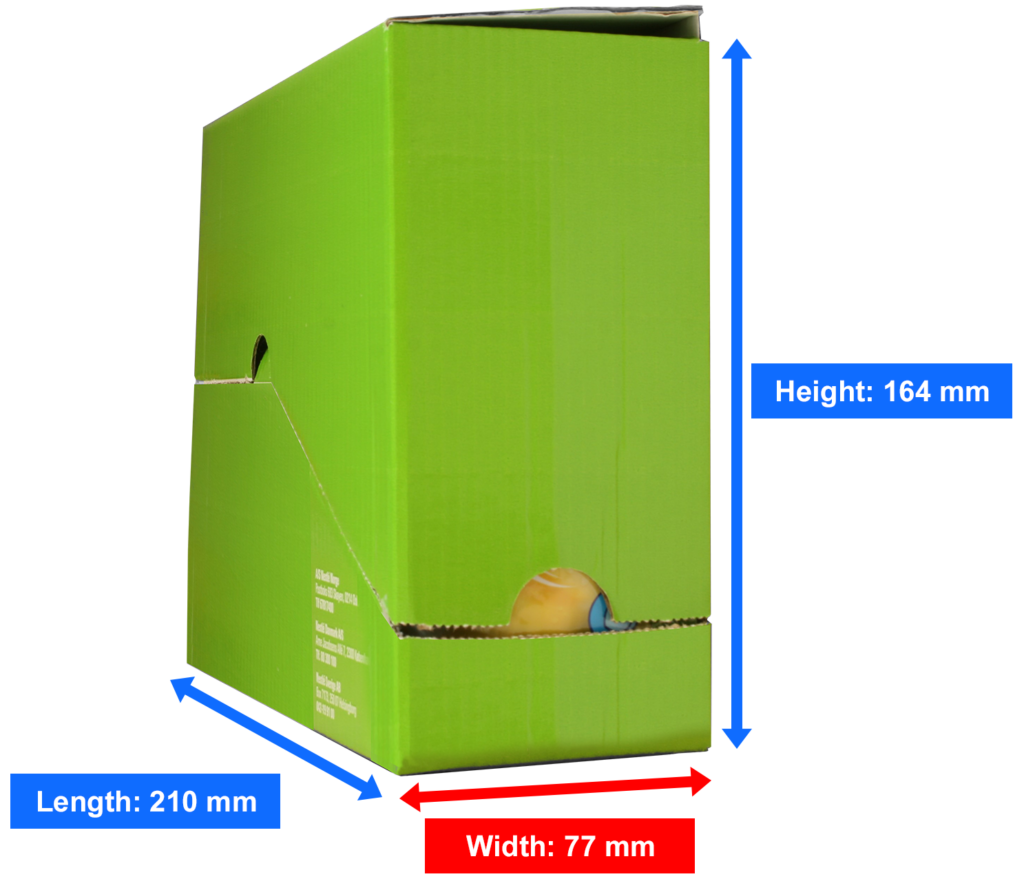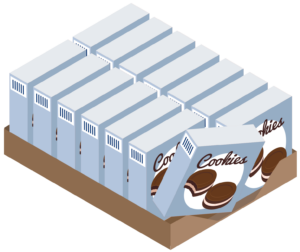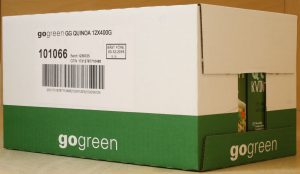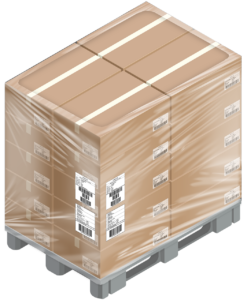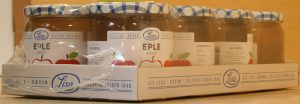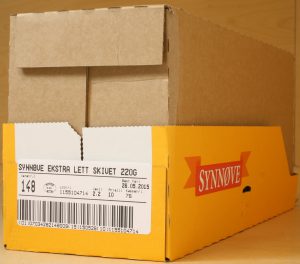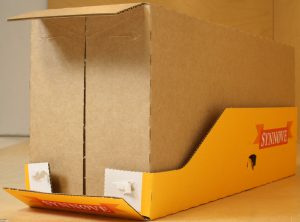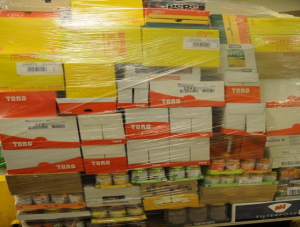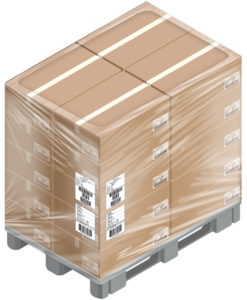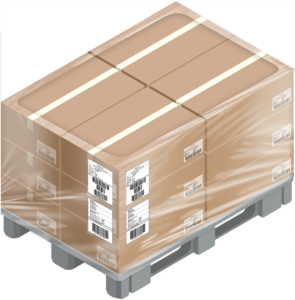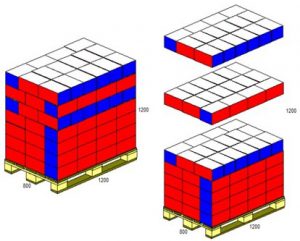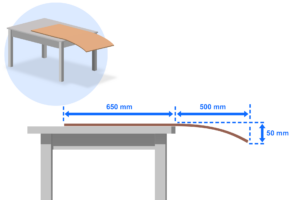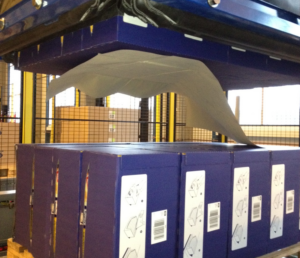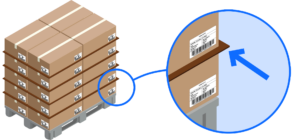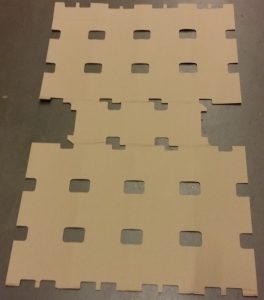5.4 Goods reception
This sub process describes the requirements, recommendations and guidelines STAND applies to receiving a delivery.
It does not describe internal procedures, but focuses on controls that shall and can be done upon receipt of the delivery. The check includes both Distributions Units (DU) and the individual Stock Keeping Unit (SKU).
In addition, the sub process describes some of the traceability and main points of any recall or withdrawal, as products receipt may have an active role in any eventual events.
Finally, measurements of service levels are described and how this can be used as an effective tool for establishing a common platform as a basis for measurement, communication and mutual evaluation of performance.
The areas described are:
- Transfer of responsibility for a product at Ex Works delivery terms
- In general, what controls should be performed on products receipt at Ex Works delivery terms
- Valid pallets and requirements for these
- Assessments related to shelf life
- Assessment of total shelf life on a product with an allocation table
- Execute customer order related to product shelf life
- The establishment of bilateral agreements for the assessment of shelf life
- Complaints according to Ex Works delivery terms
- Guidelines for return of products
- Labelling requirements
- Purpose of labelling of Stock Keeping Unit (SKU) and Distribution Unit (DU)
- Product information on Stock Keeping Unit (SKU), with example of Stock Keeping Unit (SKU) label
- Guidelines for labelling of Stock Keeping Units (SKU)
- Product information on Distribution Unit (DU), with example of Distribution Unit (DU) label
- Labelling of transport information
- Guidelines for labels on Distribution Units (DU)
- Bar code requirements for labelling with GS1-128 on Distribution Unit (DU)
- Packaging / palletization
- Requirements for the design of Stock Keeping Units (SKU) and packaging, with the modular system, case fill rate and top load labelling system, as well as special requirements for products and pallets in order for this to work in the distributor’s automated warehouse
- Requirements for the design of the Distribution Unit (DU) and palletization
- Traceability of delivery
- Guidelines for traceability, recall and withdrawal
- Requirements for traceability of products and the product areas covered by this
- Requirements for traceability information and labelling
- Alternative ways to track and trace a product in the value chain
- Implementation of actions when an event occurs
- Measurement of service levels, with definitions on target measures and examples of how these are calculated
5.4.8 Guidelines for return of products
Return of saleable, undamaged products is usually not accepted.
However, the parties may make agreements for return of products for example in connection with:
- Replacement of old product upon introduction of a new product
- Seasonal products
- Campaigns initiated by the seller
- Returns must always be agreed in advance.
5.4.25 Service Level – Purpose, types of target measures and assumptions
Intentions for measurement of service level
Measurement of service levels is a topic that most players are concerned with and are an important element in the relationships between supplier and customer.
The parties are free to agree whether to measure the degree of service.
If the parties agree to establish an agreement, STAND recommends that STAND’s definitions be used.
A challenge in relation to the exchange and evaluation of service level data has been that the trading partners often use different definitions and conditions for measurement and follow-up.
The recommendation contains suggestions for target measures and common definitions for measuring service levels. The purpose is to establish a common platform as a basis for measurement, communication and mutual evaluation of performance.
Joint exchanges of measurement results, based on the proposed definitions, could contribute to improved service levels and contribute to increased understanding of the parties’ views on customer and delivery services.
Target measures are based on DLFs (Dagligvaruleverantörers Förbund) and DULOGs (Dagligvaruhandelns Utvecklings- och Logistikgrupp ) common definitions, established in Sweden in 1998.
With this as a base as well as experience from companies with international relations, the prioritized definitions build upon the need for common understanding, measurement and evaluation of cross-border service.
With continuous follow-up, development and trends can be monitored over time. This will probably be more interesting than single results. Greater trend deviations are when warning signals and improvement programs should be implemented to reduce the likelihood that a similar situation will arise in the future.
Target measures
The recommendation describes 6 different target measures, of which STAND recommends that 3 of these are prioritized, as these can be quickly implemented in today’s systems.
Other target measures are composed of different combinations of priority targets.
Selection of target measures is done by the parties themselves and described in bilateral agreements.
The industry has an increasing focus on improving the service level to consumers, ie reducing out-of-stock in the stores. This is currently being worked on, including developing agreed definitions of how this should be measured and followed up. The following two KPIs can be used:
1. Lost sales:
When stock is zero at the end of the day, this will be set off against lost sales in the store.
Example: You have sold 40 during the day, and at the end of the day, the stock is zero. If this item had a sales forecast of 100 that day, the shelf service level of this item would be 40%.
When you aggregate this to store level, we will get a figure of how many customers were actually affected (based on the forecast) by the empty shelf.
2. Empty shelf
Number of article lines / products with stock = 0
Empty Shelf = ———————————————- ———————-
Number of article lines / products in the assortment in total
Assortment is defined as what purchasing / category management has decided.
Deviations between what the individual store has in their space program, and the defined assortment for the store may have to be measured with a separate key figure; assortment loyalty.
For the reports, inventory = 0 means that inventory is 0 or less than zero in the store’s systems.
Other priority target measures:
- Correct quantity
- Correct time
- Correct administration
Combined target measures:
- Delivery of Order – Availability
- Complete orders at the right time
- The perfect order
The target measures can be used by both the customer and the supplier for follow-up of each other’s performance.
Prerequisites for target measures and definitions
Measure
In the measurements, the unit of measurement is described as “sales unit».
It is recommended that Stock Keeping Unit (SKU) is used as a sales unit. Stock Keeping Unit (SKU) is established in most systems and is the base for transactions; ex. ordering, delivery, billing etc. to the store.
Consumer Units (CU) as a unit of measurement, however, should be the vision and goal of the future, as the Consumer Unit (CU) is the unit of measurement that is uniform and shared throughout the value chain.
Agreement on measurement of service level
Which target measures to use and what definitions should apply should be anchored in a bilateral agreement.
The agreement can regulate conditions such as:
- Accrual
- Lead times
- Assortment
- Time frame
- How the exchange of measurement results should take place
- Where and when the measurement should take place for the measurement points associated with the priority target measure “Correct time»
- Duration of measurements. In choosing definitions, the parties must agree on the degree of service to be calculated over time or in relation to a contracted number of orders
5.4.26 Definitions – Priority target measures
The target measures are based on three important dimensions in the term «service level»:
- Quantity – availability
- Time – reliability
- Administration – security
The priority targets measures should be followed and evaluated continuously with focus on level, trends and development.
Target measures Correct quantity – availability
The target measure “Correct quantity” measures availability as precision in quantity delivered.
Definition:
| Number of delivered sales Units | = Availability |
| Quantity of ordered sales Units |
The quantity ordered is the amount that the customer initially ordered.
Not delivered quantity represents deviations in delivery.
Target measure At the right time – reliability
The target measure “At the right time” measure reliability as precision in delivery time.
The target measure is used to measure compliance with time limits defined in the agreement between the parties.
The target measure can be used along several dimensions in the value chain.
Examples may be if orders are sent at the right time, if order confirmations are sent at the right time, if delivery is picked up at the right time, if Despatch Advice is sent at the right time, etc.
Definition (with example order):
| Number of late or early delivery orders | = Reliability |
| Total quantity of orders |
Delayed or premature is determined by whether exchange / delivery is within the agreed time frame.
At Incoterms Ex Works delivery terms, the assessment of the supplier’s reliability is on the supplier’s ramp.
The delivery is received when the order / delivery etc., is acknowledged for.
Target measures Correct Administration – Security
The target measure “Proper Administration” measures security as compliance between what is ordered in the order and what has been delivered and has been invoiced, that is, the correct product without errors and with the correct documentation.
Definition:
| Quantity of orders without credit / debit notes | = SAFETY |
| Total quantity of orders |
Correct administration means that Despatch Advice, shipping notes, invoices etc. are complete and error-free in relation to the delivery.
Only credit and debit notes affecting physical delivery are included in the measurement.
The target measure can also be used to measure the quality of orders from the customer.
Examples of calculation of service level for priority target measures can be found in the document
5.4.27 Definitions – Combined target measures
The priority target measures can be combined in different ways, to create Combined target measures.
STAND has defined 3 examples:
Target measure Delivery Order – Availability
The target measure “Delivery Order” gives the proportion of the orders that are properly delivered.
Definition:
| Quantity of complete orders delivered | = Level of Order Delivery |
| Total number of orders ordered |
A complete delivery order contains all ordered sales units, in the correct quantity
Availability will primarily be measured as the priority target measure “Proper Quantity – Availability”, but to calculate the combined measurements below, it is a prerequisite that “Delivery Order – Availability” is calculated.
Complete orders at the right time – Availability & Reliability
The target measure describes both accessibility and reliability in the interaction.
The target measure is composed of the target measures:
- Delivery of Order – Availability
- At the right time – Reliability.
Definition:
| Availability expressed per order
– Quantity of late or early delivery orders |
= Complete orders at the right time |
| Total quantity of orders |
Only one error per. order is counted
The measurement of “Complete Orders at the Right Time” shall be done at the place of arrival. At Incoterms Ex Works delivery terms, this is the supplier’s ramp
The perfect order
This is the most demanding target measure and measures all types of deviations regarding complete orders.
The target measure is composed of three previously defined target measures:
- Delivery of Order – Availability
- At the right time – reliability
- Correct administration – Security
Definition:
| Quantity of complete orders delivered
– late or early delivery orders – Orders with missing or incorrect documents – Orders with credit / debit notes |
= The perfect order |
| Total quantity of orders |
Only one error per. order is counted
If both the supplier and the customer’s obligations are considered in the target measure, the target measure represents the performance that the parties create in common.
Examples of calculation of service level for combined target measures can be found in the document
Examples of combined target measures
Innhold
- 5.4.1 Transfer of responsibility for products at Ex Works delivery terms
- 5.4.2 Check of products at loading, receipt at warehouse, and retailer at Ex Works delivery terms
- 5.4.3 Valid pallets
- 5.4.4 Allocation of total shelf life on a product
- 5.4.5 The establishment of bilateral agreements for the assessment of shelf life
- 5.4.6 Dispatch of customer orders related to product shelf life
- 5.4.7 Complaints by Ex Works delivery terms
- 5.4.8 Guidelines for return of products
- 5.4.9 Purpose of labelling of Stock Keeping Unit (SKU) and Distribution Unit (DU)
- 5.4.10 Guidelines for labelling of Stock Keeping Units (SKU)
- 5.4.11 Transport information on pallet with example of transport label
- 5.4.12 Product information on Distribution Unit (DU), with example of Distribution Unit (DU) label
- 5.4.13 Guidelines for labels on Distribution Units (DU)
- 5.4.14 Bar code requirements for labelling with GS1-128 on Distribution Units (DU)
- 5.4.15 Requirements for design of Stock Keeping Unit (SKU) and packaging
- 5.4.16 Requirements for the design of the Distribution Unit (DU) and palletization
- 5.4.17 Placement of Stock Keeping Unit (SKU) on pallet
- 5.4.18 Guidelines and routines for tracking, recall and withdrawal
- 5.4.19 Routines covered by the guidelines
- 5.4.20 Prepare a Risk Analysis
- 5.4.21 Prepare a Contingency Plan
- 5.4.22 Product tracking requirements
- 5.4.23 Requirements for tracking information and labeling
- 5.4.24 Actions to be made in case of an incident or crisis
- 5.4.25 Service Level – Purpose, types of target measures and assumptions
- 5.4.26 Definitions – Priority target measures
- 5.4.27 Definitions – Combined target measures
